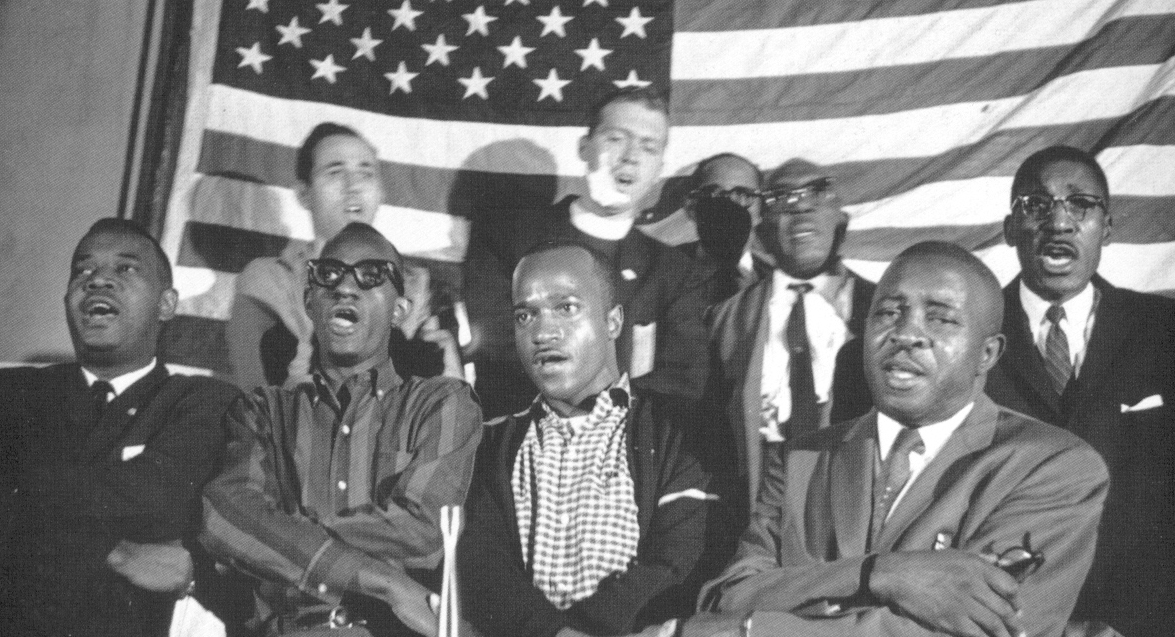November 1963
Mississippi Freedom Vote
In the fall of 1963, as Mississippi shifted into high gear for the November gubernatorial election, only 12,000 Black people were registered to vote. The commitment to “One Man, One Vote” drove SNCC’s registration efforts in the midst of rigged Mississippi politics. Mass protests in Greenwood in May and June inspired SNCC organizers and local leaders across the state to create a fresh, major project that would reach new areas. A statewide effort, Bob Moses wrote, “was a natural outgrowth of Greenwood.”
Most whites did not even believe that Black people wanted to vote, and this attitude spilled over into the federal government and national news media. The terror that kept disenfranchisement and white power in place was invisible. COFO decided to initiate a Freedom Vote to show Washington and the entire country that if they could register without intimidation and discrimination, Black people would show up to vote in huge numbers. So, COFO planned to educate and register Black Mississippians to vote in a mock election for governor. Registration sites were set up in Black communities. At an October COFO convention, delegates fashioned a platform that included voting rights for all Blacks, a minimum wage increase, and a farm loan program.
The delegates chose “Mississippi’s most recognized Black leader,” Aaron Henry of the NAACP, as the candidate for Governor. Tougaloo College chaplain, Ed King, was selected as his Lieutenant Governor. With the Freedom Vote ticket in order, COFO embarked on a three-week campaign that included rallies, organizing polling sites, and generally spreading the word about the Freedom Vote across Mississippi.

Rally for the Freedom Vote, Hinds County, Mississippi, 1963. Front row from left: NAACP leader Aaron Henry, SNCC organizers Sam Block and Willie Peacock. Matt Herron, crmvet.org
The time crunch and ongoing strain for resources led to the involvement of Al Lowenstein, a northern political scientist and professed ally of the Movement who helped recruit students from Yale and Stanford to join the campaign efforts. This would set the stage for 1964 Freedom Summer’s flow of northern student volunteers. It would also begin, among SNCC and CORE organizers, intense discussion about the role of whites in Mississippi’s Movement.
As the campaign spread across the state, Aaron Henry reached all parts of Mississippi, speaking to crowds sometimes as large as a thousand people. At a rally at a Hattiesburg church, police cars and fire trucks encircled the church where they met, blaring their sirens. Firemen stormed inside and claimed that there was a fire. Henry shouted over the sirens, “The fire within us cannot be extinguished with water!”
From November 2nd – 4th, Black Mississippians voted at Sunday church services, in beauty parlors, and pool halls. Mike Miller remembered, “[Though this] was obviously not the quote, unquote, ‘legal ballot,’ everybody realized that it was a test of whether we can really get people to put their bodies on the line for the right to vote, because they would have to show up in a public place and check a ballot.” 83,000 Mississippians cast their ballot in the 1963 Freedom Vote for Henry and King. The Freedom Vote, as SNCC chairman John Lewis wrote, “laid the foundation for a “powerful, Black-led, state-wide, political organization…It was the beginning of the MFDP, in terms of having a mass base, a mass following in Mississippi.”
Sources
John Dittmer, Local People: The Struggle for Civil Rights in Mississippi (Urbana: University Illinois, 1994), 200-207.
Robert P. Moses and Charles E. Cobb, Jr., Radical Equations: Civil Rights from Mississippi to the Algebra Project (Boston: Beacon Press, 2001), 70-73.
Charles Payne, I’ve Got the Light of Freedom: The Organizing Tradition and the Mississippi Freedom Struggle (Berkeley: University of California Press, 1995), 294-297.
Interview with Bob Moses by Joseph Sinsheimer, November, 1983, Joseph Sinsheimer Papers, Duke University.




